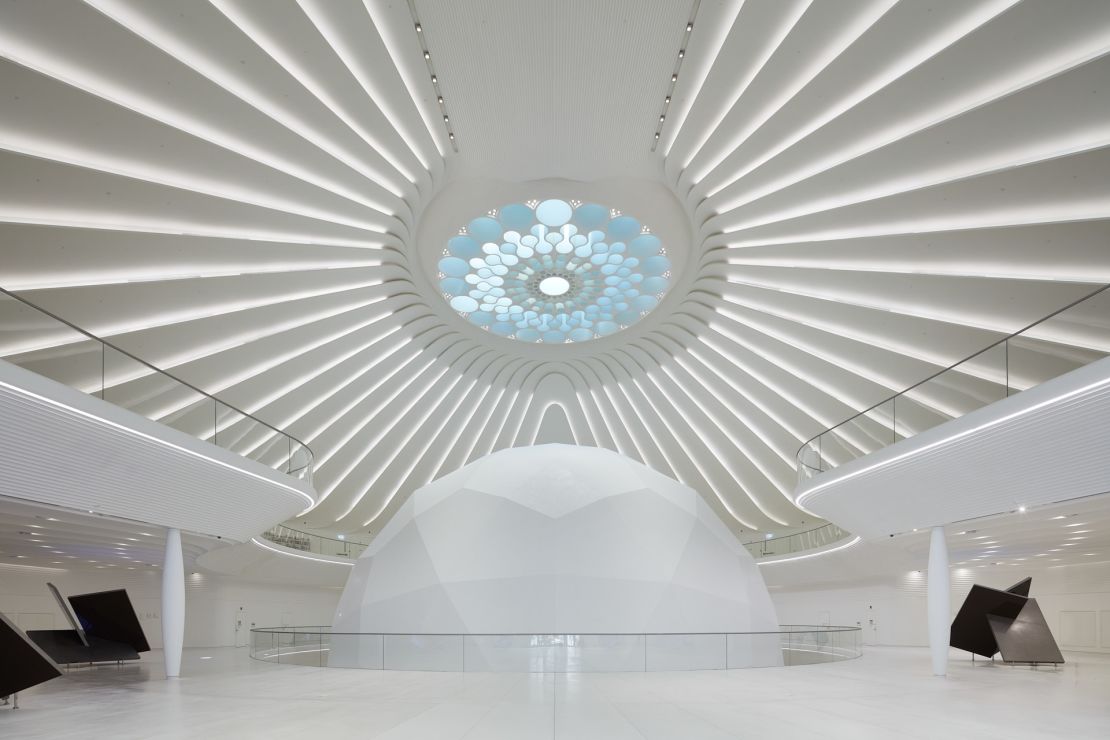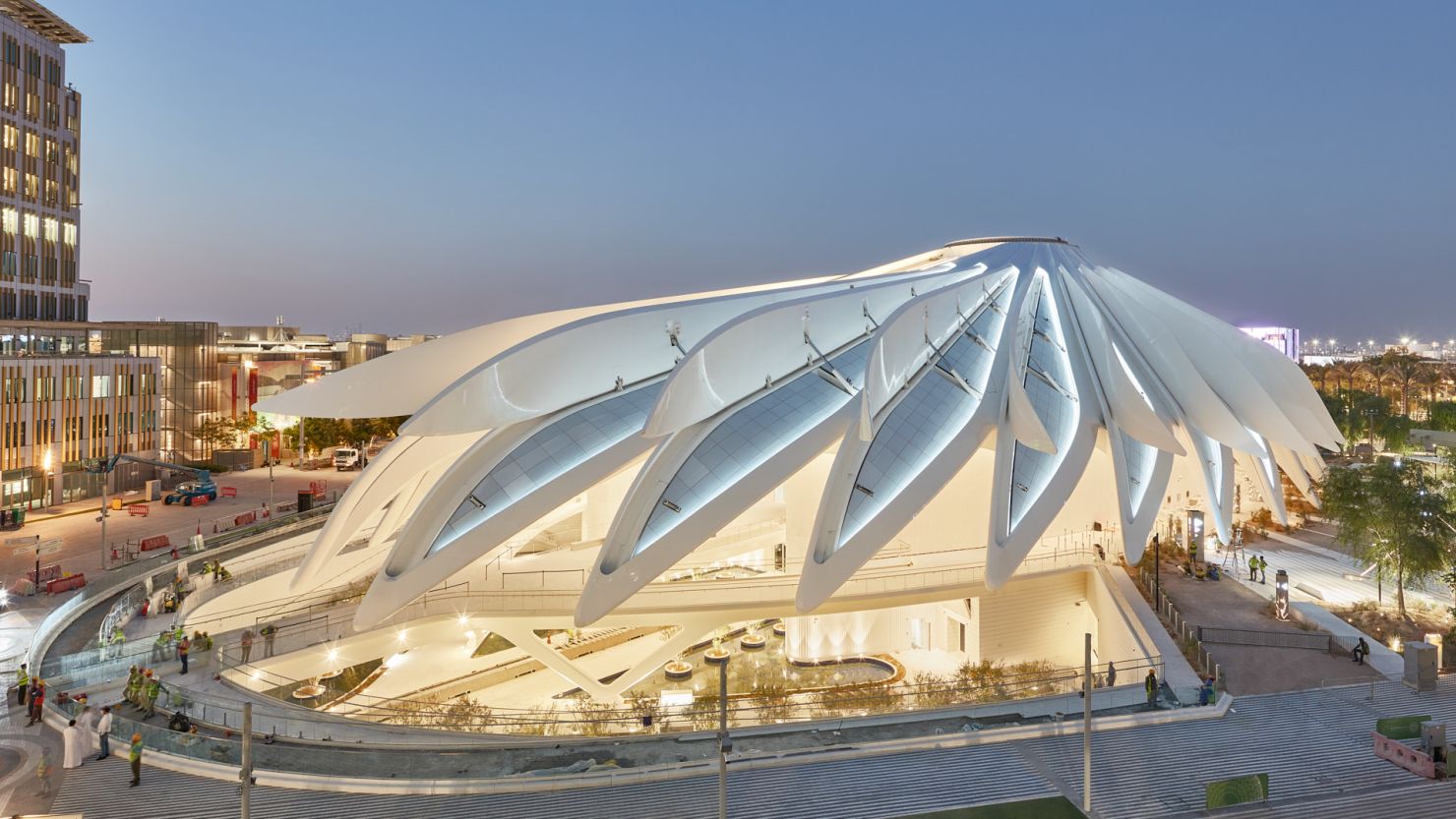Sitting at the heart of the World Expo site in Dubai, the pavilion of host country the United Arab Emirates (UAE) sports one of the most attention-grabbing designs at an event that is packed with architectural marvels.
The four-story structure is covered with 28 carbon fiber wings that can fully open in about three minutes to reveal built-in solar panels. When not in use, the panels remain protected from the elements, including the region’s powerful sandstorms.
“The conceptual framework was based on inspiration from the grace and force of a falcon, the UAE’s national bird,” says celebrated Spanish-Swiss architect Santiago Calatrava, who designed the pavilion. The wings can position themselves between 110 and 125 degrees, to better absorb sunlight, and the electricity they produce is sent to the main power grid.
Due to the wings’ large size and weight, they open using the power from up to three hydraulic cylinders, which must be accurately synchronized to avoid uneven movements that could crack the structure of the wing itself. Calatrava says that this aspect of the roof’s engineering required close attention.
‘A cool and tranquil environment’
With a total area of 161,000 square feet, this is the largest of all national Expo pavilions, and is surrounded on all sides by landscaped areas with plants. The building itself is shaped like a traditional Bedouin tent, centered around a spherical auditorium with a large skylight directly above it.

“Since Expo 2020 is hosted in a very hot region, it was important that we created a cool and tranquil environment to offer visitors respite from the sun,” Calatrava explains. “We were able to accomplish this by incorporating large water pools and trees that naturally cool the air, creating shade, and reducing reflected heat, making this space a sunken refuge from direct exposure to the extreme climatic conditions.”
Inside, visitors can experience six interactive installations, each depicting a chapter of the nation’s story. One of them, called Crossroads, is based around 700 physical objects historically traded in the Middle East such as “mangoes and spinning tops, coffee beans and compasses, perfume bottles and pearls,” and is meant to highlight the UAE’s geographical position — a crossroads of historical trade routes stretching back thousands of years.
Calatrava says that the guiding principles that informed the design of the pavilion and the experience are in line with the Expo themes of sustainability and connectivity. “I wanted visitors to have the opportunity to explore the region’s rich history,” he says, as well as its current innovations and future prospects.
Like several other pavilions, this one will be repurposed for cultural uses once the even concludes in March 2022, and it has received a LEED Platinum certification — the highest rank in the world’s most widely used rating system for green buildings. Calatrava sees the event as an opportunity for architects to champion new solutions for global challenges. “We, along with the architects across the entire exhibition are showing the world that we can build sustainably,” he says.
“In a sense, we are also exhibiting our work for others to emulate, as we continue to build for the future.”


